Dental crowns can be placed either on the remainder of the tooth which is so damaged that it can no longer perform its function, or a dental implant. In either case, you will have the feeling that you have regained a lost tooth.
What will you learn in this article?
In this article, read about the following topics:
- What is a crown or dental veneer?
- Types of dental crowns
- Material for making dental crowns
- When do you need a dental crown?
- How is a dental crown installed?
What is a crown?
The tooth crown is a prosthetic replacement with which we change only the upper, visible part of the tooth called the tooth crown.
But this is just one of two ways to install dental crowns. Find out about different types of tooth veneers below.
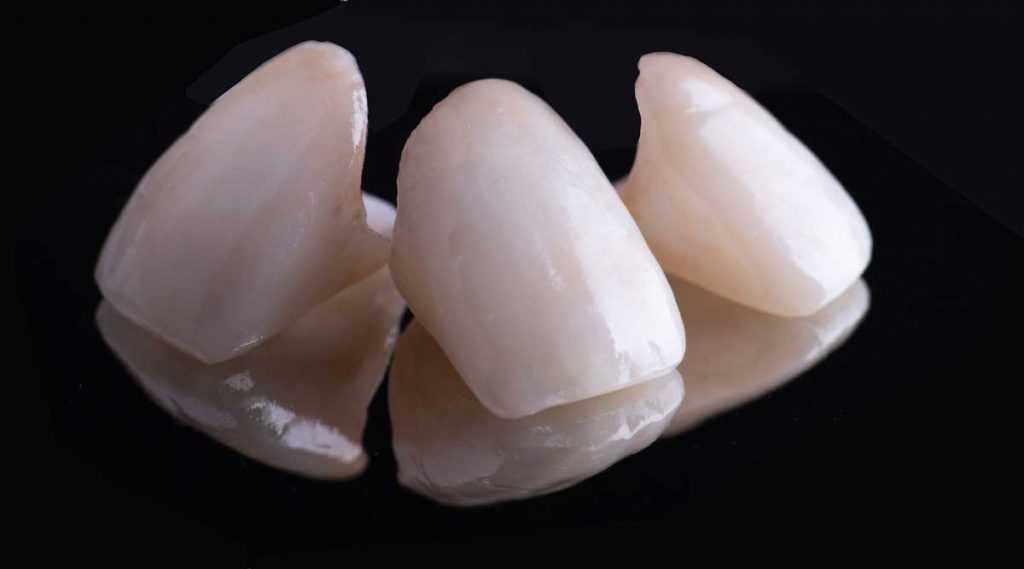
Types of dental crowns
Dental crowns are primarily divided by method of installation, and then material of manufacture:
According to the method of installing a dental crown, we divide them into:
- The dental crowns we place on a natural tooth or an reinforced root.
- Tooth crowns that are placed on a dental implant.
A dental crown on a natural tooth or a reinforced root
We can place the crown on a tooth or a reinforced root, if we estimate that it is stable enough for such a method of installation.
Of course, this means that the tooth is not moving or affected by processes and diseases that can lead to its falling out.
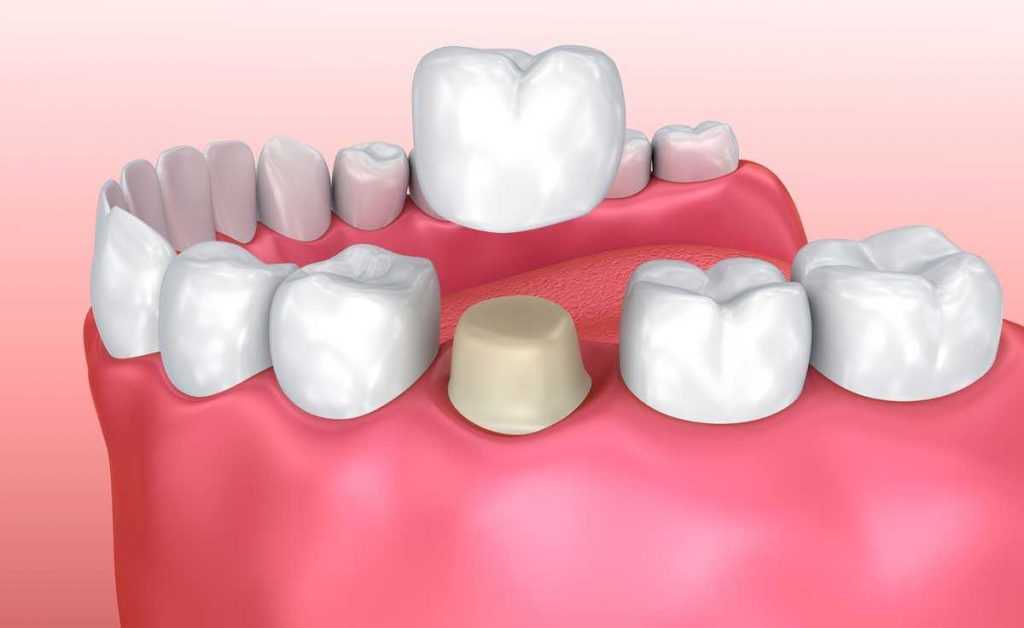
Dental crown on a dental implant
If the tooth is extracted, even if there is no hope of saving the tooth, it is recommended to place a crown on a dental implant.
Although more expensive than placing a crown on a natural tooth or root, it is also better and a longer-term solution.
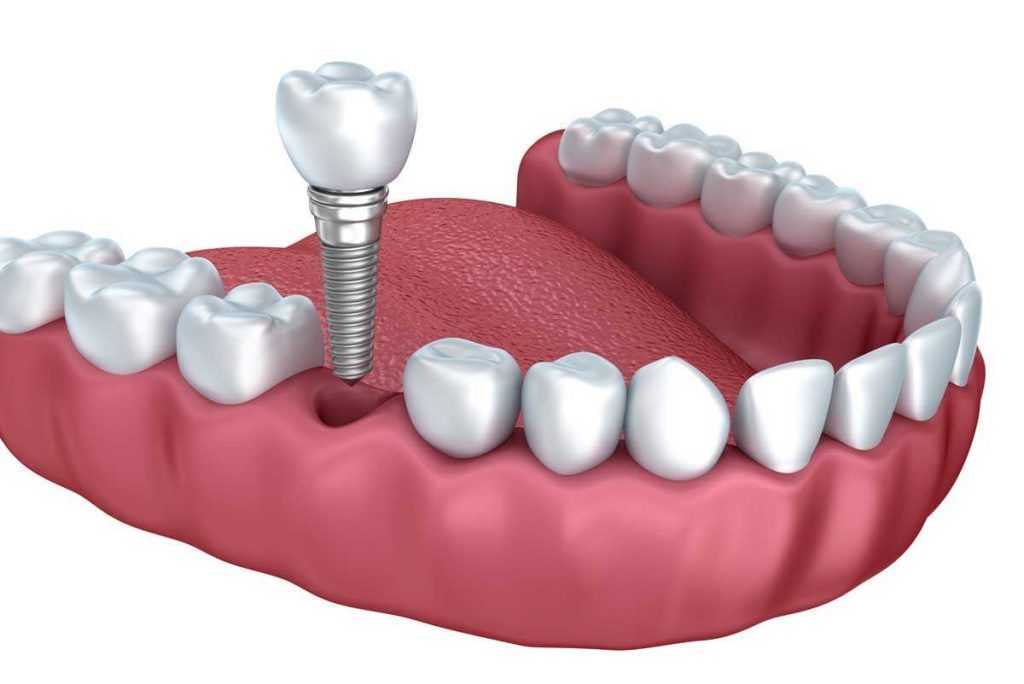
Our clinic specializes in dental prosthodontics, with half a century of tradition based on dental prosthetics.
We will surely find a high-quality, affordable and long-lasting solution for your missing teeth.
Have trust in us and contact us in case you need advice or have a question.
Get a professional check-up without leaving your home!
We offer a virtual dental examination. Learn more!
Materials for making dental crowns
Depending on the material of the tooth crown, according to material of manufacture, we classify them in two main groups:
- Dental crowns with a metal base, or metal-ceramic crowns
- Metal-free dental crowns.
Metal-ceramic dental crowns
Metal-ceramic dental crowns’ name already reveal how they consist of a metal and ceramic part.
The ceramic part is made of feldspathic ceramic. Since feldspathic ceramic is based on raw materials from which porcelain and glass are obtained (feldspar, kaolinite and quartz), it has properties of hard porcelain and shiny glass.
Therefore, it is colloquially often referred to as “porcelain” and “porcelain teeth“.
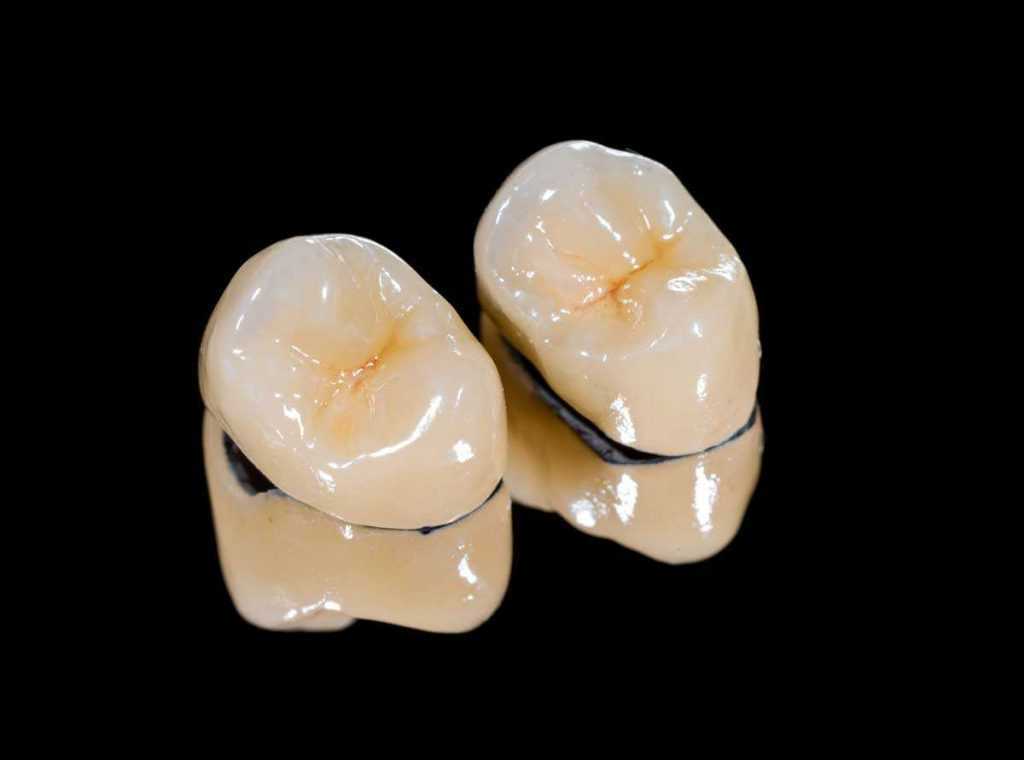
The metal part, the base of the dental crown, in metal-ceramic crowns is made of alloys of precious or non-precious metal.
Precious metals, such as gold, platinum, silver or palladium, are mixed in certain combinations and proportions to form bases for crowns with excellent properties.
Gold-ceramic dental crowns
For example, gold alloys are especially appreciated due to their excellent edge fit and resistance to dissolution of the cement by which they are attached to the root of the tooth.
That results in less risk from creation of micro cracks or distance between the metal base and the root of the tooth, which means less risk of formation of caries or gingival inflammation.
Decades of using precious materials in dental prosthetics have taught us how great these materials are at ”preserving” teeth.
For example, when such prosthetic works are removed, the teeth below are in excellent condition even with the oldest prosthetic works.
Due to these qualities, we in the Apolonija Dental Clinic also offer and recommend -ceramic dental crowns with gold base.
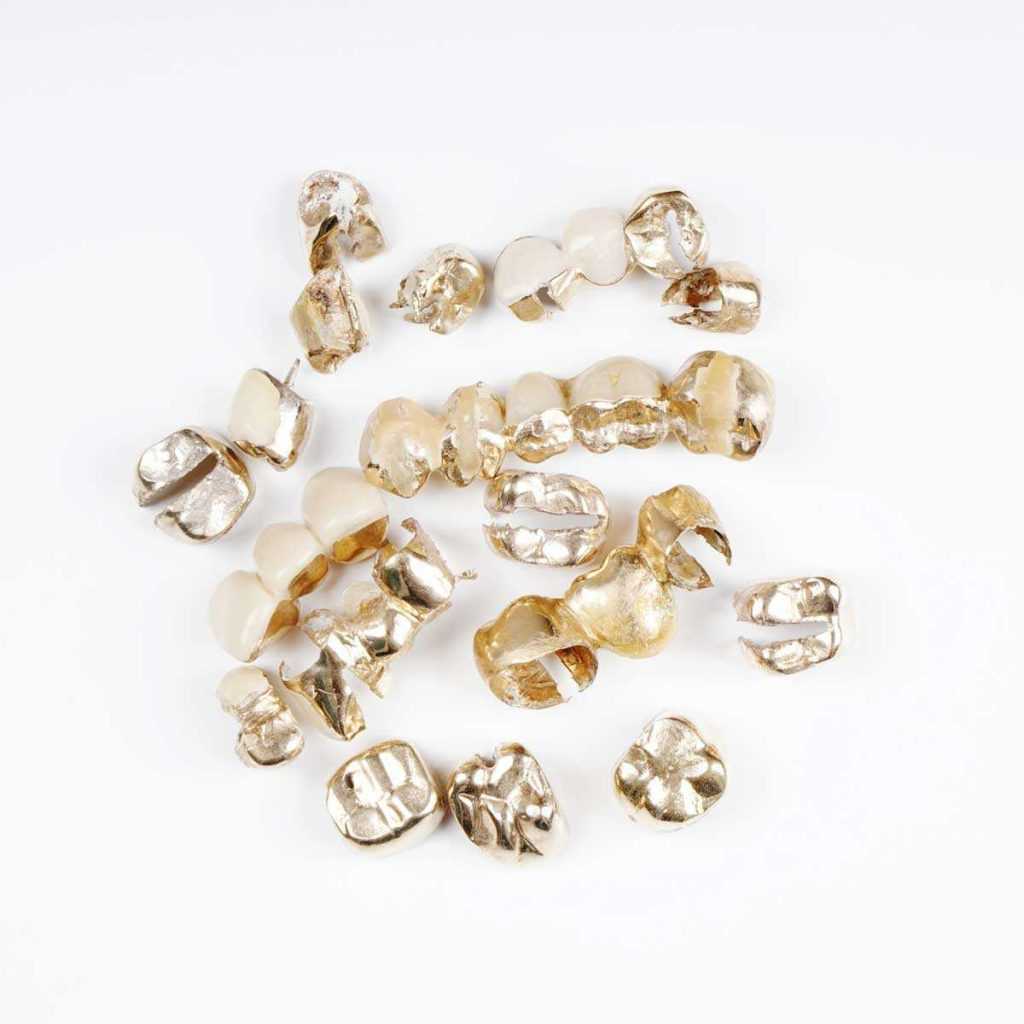
There are also more affordable metal-ceramic crowns whose base is made of alloys of non-precious metals.
These are still very reliable and high-quality crowns. Their metal base is usually made of a cobalt and chromium alloy, then nickel and chromium alloy or titanium alloy.
All known metal-ceramic crowns, regardless of which metals their bases are made of, have already been in use for many decades and stand the test of time.
Therefore, whatever metal-ceramic dental crown you opt for, you can be sure you will have a reliable dental prosthetic solution.
Titanium-ceramic dental crowns
Even though titanium-ceramic dental crowns fall under metal-ceramic crowns, due to the special qualities of titanium, they come with a higher price.
Titanium is light, corrosion resistant, has a low specific gravity, and is very sturdy and resistant to deformation.
Pure titanium is used in dental prosthetics, but also titanium alloys, which for some applications have even better properties than pure titanium.
Disadvantages of metal-ceramic crowns
First of all, it should be said that metal-ceramic dental crowns are an exceptionally stable and high-quality solution for a large number of patients.
Due to their strength they are also a great solution for dental bridges consisting of three or more dental crowns.
However, they have several shortcomings due to which today they are increasingly giving way to metal-free dental crowns:
- Metal-ceramic dental crowns do not transmit light due to their metal base so the crown does not have the light effects that a natural tooth has.
- In some patients, metal from a metal-ceramic crown can lead to gum sensitivity, changes to their appearance, and even their recession.
- These changes are most often associated with the condition of the periodontium (tissue around the tooth). If this happens on teeth with metal-ceramic crowns, grey colour of the metal may be visible on the edge of the crown.
- Metal-ceramic dental crowns are extremely strong. However, the dental ceramics used in their production can crack.
If you are worried about the shortcomings of metal-ceramic dental crowns, it is better to opt for metal-free. In addition to excellent physicochemical properties and biocompatibility, they are also distinguished by superior aesthetics.
Metal-free dental crowns.
Metal-free dental crowns were created with the aim of restoring shape, function and natural tooth aesthetics, with minimal damage to other teeth and gums, and with maximum durability.
Today we achieve that goal with zirconia-ceramic, completely zirconia and glass-ceramic crowns for teeth.
Metal-free dental crowns can look like a natural tooth, with no noticeable difference.
With our specialist in dental prosthetics, Ivana Toljan, you will find a permanent and aesthetically the highest quality solution for a missing tooth.
Have trust in us and contact us in case you need advice or have a question.
Get a professional check-up without leaving your home!
We offer a virtual dental examination. Learn more!
Zirconia-ceramic and zirconia crowns for teeth
Zirconia-ceramic dental crowns consist of zirconium bases over which a layer of dental ceramics is added.
They are characterized by exceptional aesthetic properties. They let in light and shine almost like a natural tooth.
That is why, among other things, they are most often recommended for the smile zone.
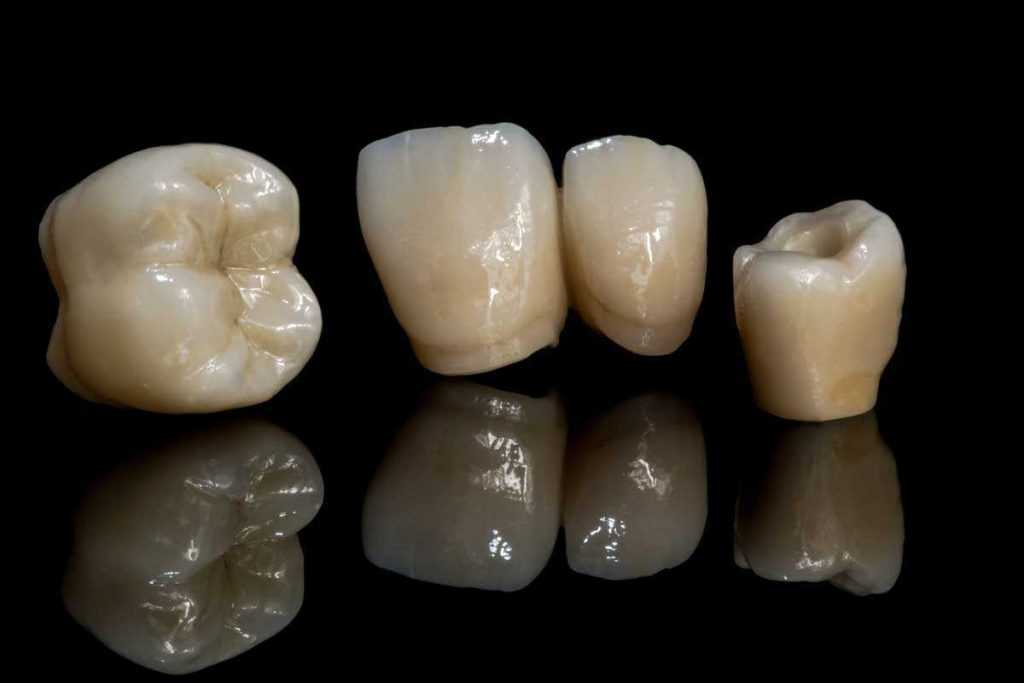
Zirconia crowns, so-called monolithic crowns (made from one piece), on the other hand, are made entirely of zirconium ceramics and polished to a high gloss.
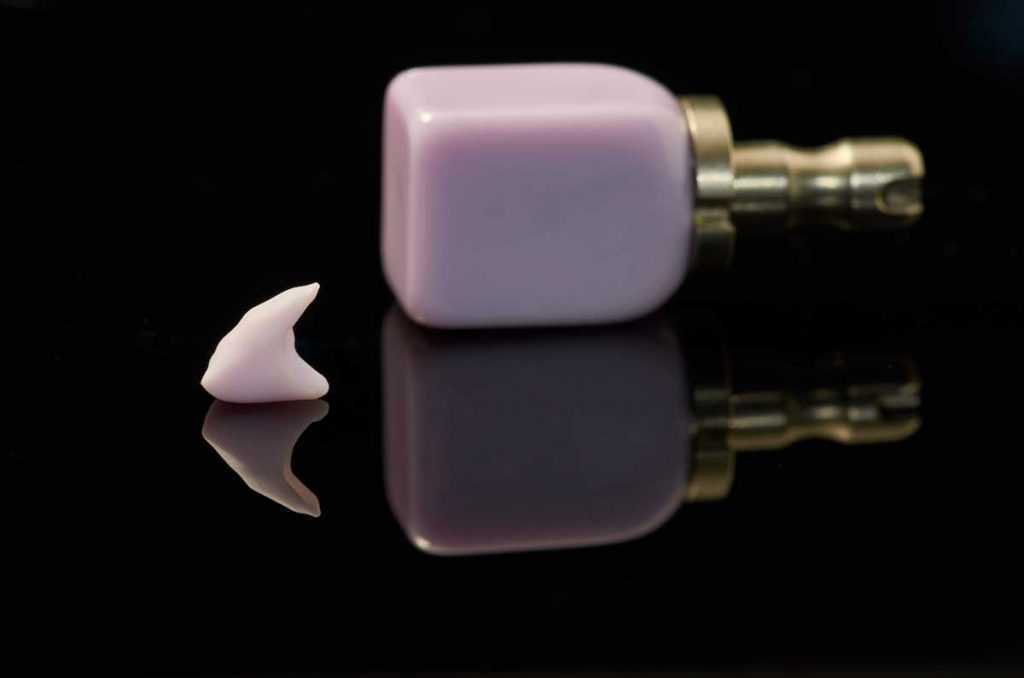
Zirconium dioxide or zirconium ceramics
Zirconia used for zirconia-ceramic and zirconia crowns is stabilized zirconium-dioxide, also known as zirconium or zirconium-oxide ceramics.
It is obtained from the metal zirconium, but it is quite different from zirconium due to the physical-chemical changes it undergoes in the production process.
Therefore, it can be quite justifiably said that it a metal-free dental crowns.
Emax and Empress dental crowns
Emax and Empress dental crowns are made of glass-ceramics.
Glass-ceramics, or more professionally, lithium-disilicate ceramics, are formed by crystallization of glass. It combines excellent physical properties – hardness like natural enamel – with exceptional aesthetic properties.
We can say that this material is aesthetically closest to the beauty of natural teeth which is why we always recommend them for the front region, the smile.
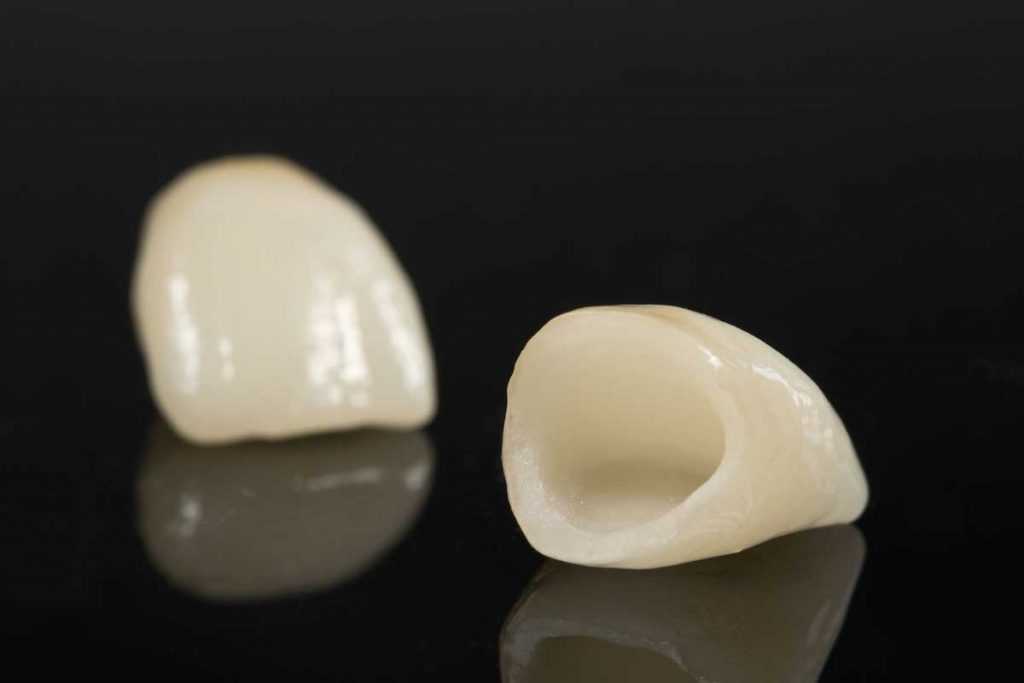
Empress and Emax dental crowns look like a natural tooth, with no noticeable difference.
Replace a lost tooth with the most durable and aesthetically pleasing solution.
Have trust in us and contact us in case you need advice or have a question.
Get a professional check-up without leaving your home!
We offer a virtual dental examination. Learn more!
When do you need a dental crown?
If you recognize yourself in the following descriptions you are a good candidate for dental crowns:
- Cracked and damaged tooth.
- A tooth that has been treated multiple times, but keeps breaking and falling apart.
- Caries has affected the tooth so much that a part of the tooth has disappeared.
- The tooth is naturally deformed and does not fit harmoniously into the dentition.
- The tooth is of a different colour from other teeth.
Plus, if you miss a tooth entirely, you should replace it by installing a dental implant with a dental crown.
A more favourable variant of one tooth replacement is the installation of a dental bridge, however in that case we have to grind two adjacent, healthy teeth as well.
Read more about dental bridges on our website “Solutions for missing a few teeth”.
If you are considering dental crown placement, feel free to contact us for advice.
We can offer you all the best, but also affordable solutions that will meet your needs.
Have trust in us and contact us in case you need advice or have a question.
Get a professional check-up without leaving your home!
We offer a virtual dental examination. Learn more!
How is a dental crown placed?
Dental crown placement procedure differs, depending on whether the crown is placed on a dental implant or on a natural tooth.
As for the placement of the dental implant, you can find a detailed description on our website under the category “Dental implants”.
Placement of a dental crown on a dental implant
A prerequisite for placing a dental crown on an implant is that the implant is fused with bones (osseointegration) properly.
Step 1: taking an imprint or scan
- A dental imprint should be made first for creating the final prosthetic appliance, in this case the dental crown.
- Dental impression, i.e., bite model, the position and relationship between the jaws, can be made in the impression material or digitally, by scanning the teeth with an intraoral scanner.
- Taking a digital imprint is far faster and more comfortable for the patient.
- At the Apolonija Dental Clinic, we use an intraoral iTero scanner to create in as little as approximately 10 minutes an extremely detailed 3D image of all your teeth.
Step 2: manufacturing in the desired material
- Based on the 3D scan, the dental laboratory will make a dental crown in the selected material (metal-ceramic or metal-free crowns).
- Sometimes, in the meantime, while you wait for the dental implant to heal, it is possible to wear a temporary provisional crown.
Step 3: trial fitting and permanent installation
- After 5-7 days, your dental crown will be ready to try.
- At the trial fitting, we will determine if it still needs to be adjusted, however, thanks to the precise intraoral scan in many cases the crown will fit perfectly.
- If additional finishing is required, we will return the crown to the dental laboratory, and after a few days a new trial fitting will follow.
- Then we can permanently attach the dental crown to a dental implant.
Placing a dental crown on a natural tooth
We can also place a dental crown on the rest of the natural tooth. Sometimes it is enough to just reduce the existing tooth, and sometimes you will need to reinforce it as well, so that it could accept the crown.
Step 1: Shaping the base for the crown
- You will receive local anaesthesia and we will proceed to prepare the natural crown of the tooth into a stump for the reception of the crown.
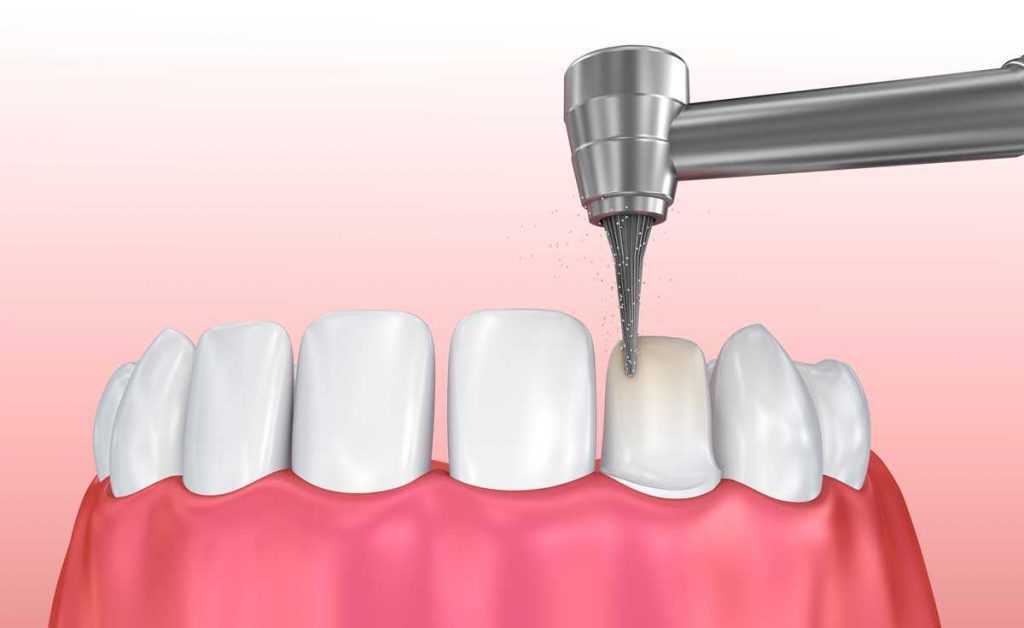
- If only the root of the teeth we are replacing is left, instead of reducing, we will have to treat the tooth root and restore the tooth, which the dentist will indicate at the first examination.
Step 2: making an intraoral scan
- As with the placement of a dental crown on a dental implant, a digital print needs to be made, as we explained earlier.
- After preparing the teeth and making an impression, a temporary crown is made immediately, which you wear while we wait for the crown to be made.
- A temporary crown preserves the prepared tooth and surrounding tissues and is necessary for a precise result. It is functionally and aesthetically completely satisfying, and you can do almost anything with it as with a permanent crown.
Step 3: Manufacturing a dental crown
- The scan of the teeth is sent to a dental laboratory, which uses it to manufacture a dental crown from the desired material.
Step 4: trail fitting of the crown on the tooth
- After 5-7 days you will come see us again, this time for a trial fitting of the permanent crown. Together we will decide what your teeth will finally look like.
- At this stage, communication with the dentist is very important, because a lot can still be changed and adjusted to your wishes.
- After that, we will complete the dental crown and then permanently affix it.
Did you find out what you wanted to know?
In this article you will learn a lot of details about crowns for teeth. You may want to learn more about the following topics:
- Solutions when missing several teeth
- Solutions when missing all teeth
- All-on-4: a dental bridge on implants
- Prerequisites for the installation of dental implants
Our clinic specializes in prosthodontics, with half a century of tradition based on prosthodontics.
We can find a high-quality, affordable and long-lasting solution for your lack of teeth.
Have trust in us and contact us in case you need advice or have a question.
Get a professional check-up without leaving your home!
We offer a virtual dental examination. Learn more!


